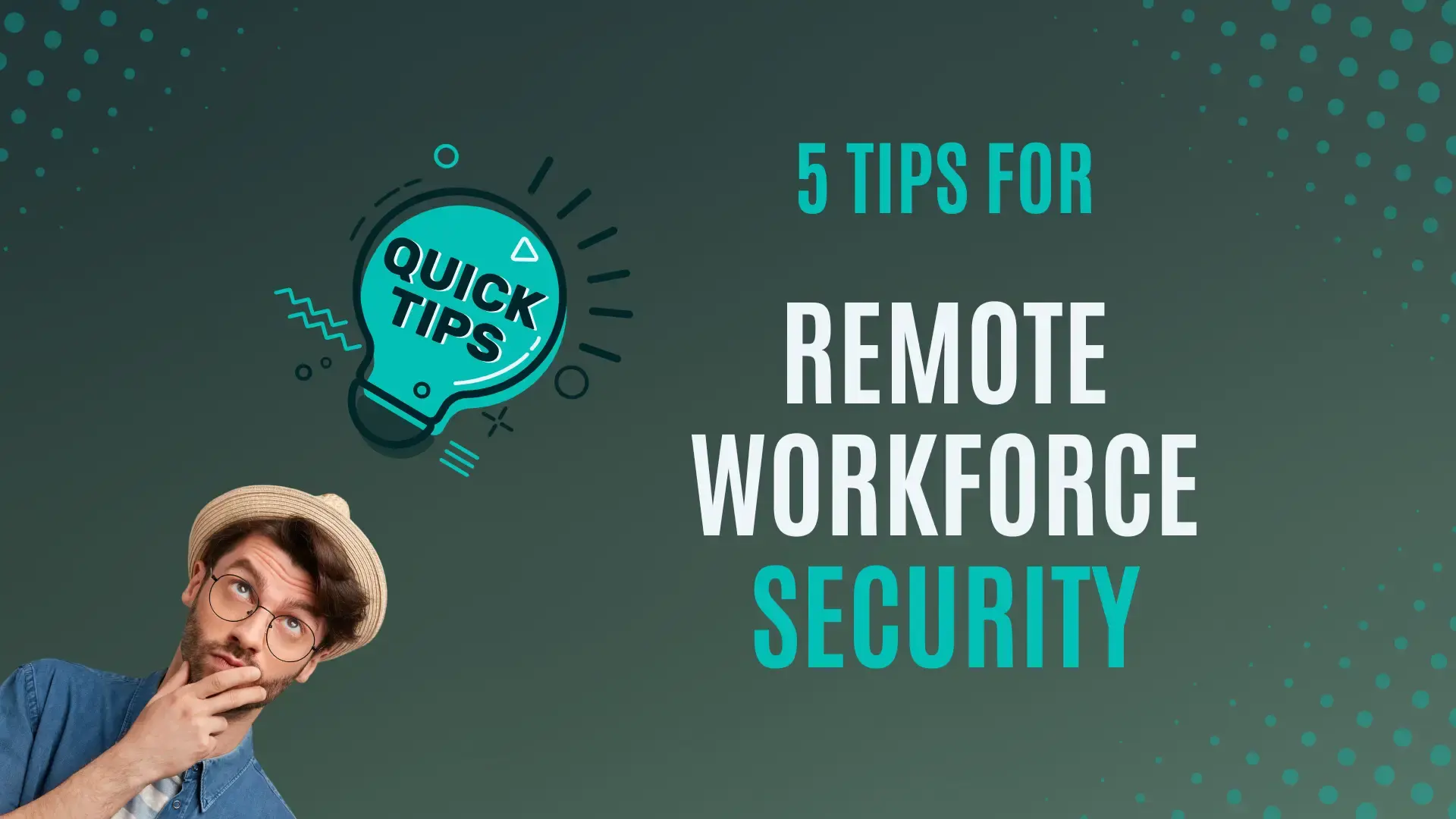The great work-from-home experiment that started a few years back has, for many of us, become… well, just how we work now. And while trading your commute for a two-step shuffle to the coffee pot is a definite win, it’s opened up a whole new playground for cybercriminals. Here at Monreal IT, we’ve seen firsthand how the rapid shift to remote and hybrid work has left many businesses unintentionally exposed.
It’s one thing to secure a single office building; it’s another thing entirely to secure a dozen, or even a hundred, individual home offices, each with its own network, devices, and potential distractions. (Yes, we're counting your cat walking across your keyboard as a potential, if adorable, security threat.) But don’t you worry. Building a secure remote workforce isn’t about turning everyone’s home into a digital Fort Knox. It’s about implementing smart, effective strategies. As part of our commitment to building powerful partnerships, we want to share some of our top tips for locking down your remote operations.
1. Use a Business VPN (Not Your Cousin's "Free" One)
We’ve all seen the ads for consumer VPNs that promise to let you watch geo-blocked streaming services. While those are great for your weekend movie marathon, they are not built for business. A business-grade Virtual Private Network (VPN) creates an encrypted, secure tunnel from your employee's device directly to your company's network.
Think of it this way: when your employee works from a coffee shop, their data is traveling through public Wi-Fi, which is about as private as a town square. A VPN makes that connection invisible and unreadable to anyone trying to snoop. A proper business VPN allows for centralized management, ensures consistent security protocols for everyone, and doesn't log your activity to sell to advertisers. Honestly, it's one of the most fundamental and crucial steps for any remote workforce.
2. Endpoint Security is Non-Negotiable
What’s an endpoint? It’s the device your employee is using to do their job, their laptop, their desktop, even their tablet or phone. In a traditional office, these devices are all nestled safely behind a powerful corporate firewall. At home, they’re on their own. This is why robust endpoint security is so critical.
This goes way beyond basic antivirus software. Modern endpoint protection is like having a dedicated, 24/7 digital bouncer for each and every device. It actively monitors for malware, ransomware, and suspicious behavior. If it detects an attempted breach on one employee's laptop, it can isolate that device from the rest of the network instantly, preventing the threat from spreading. It's a non-negotiable layer of defense in a world where the office perimeter no longer exists.
3. Keep Work Chatter in the Right Channels
When a quick question arises, it’s tempting for employees to use personal chat apps or text messages to get a fast answer. It’s convenient, but it’s also a security nightmare. These personal communication channels lack the encryption, security oversight, and data retention policies that business-grade tools like Microsoft Teams or Slack offer.
Conversations about clients, internal projects, or financials have no business living on a personal, unsecured platform. By mandating the use of company-vetted communication tools, you ensure that sensitive data stays within your secure environment. Plus, it keeps a clear record of business communications, which is just good practice all around.
4. The Human Firewall: Your First and Last Line of Defense
You can have all the fancy security software in the world, but your biggest vulnerability will always be human error. Cybercriminals know this, and they’ve tailored their phishing scams to target remote workers, often using fake IT support emails, urgent requests from "the boss," or bogus delivery notifications.
This is where training becomes paramount. Regularly educating your team on how to spot phishing attempts, the importance of data handling policies, and general security best practices turns your employees from potential targets into a proactive "human firewall." Fostering a culture where someone feels comfortable saying, "Hey, this email looks weird, can someone check it?" is one of the most powerful security tools you can have.
5. Lock It Down with Strong Passwords and MFA
This one feels a bit like telling you to eat your vegetables, but it's a classic for a reason. Weak, reused, or stolen passwords are the number one way attackers get into networks. Enforcing a strong password (or passphrase) policy (length and complexity) is the first step. The second, and arguably more important step, is Multi-Factor Authentication (MFA).
MFA is the digital equivalent of having both a key and a deadbolt on your front door. Even if a criminal steals your password (the key), they can't get in without the second piece of verification, which is usually a code sent to your smartphone. In a remote work environment where devices are constantly connecting from outside the traditional office, MFA isn't just a good idea; it's an absolute necessity.
Building Your Remote Fortress
Securing a remote workforce might seem daunting, but by focusing on these key areas, you can build a powerful and resilient defense. It's all about extending your security culture beyond the office walls. For many businesses in our area (Cleveland, OH), finding the time and expertise to implement and manage these solutions can be a challenge. That's where partnering with a provider of managed IT services can transform your remote security from a source of anxiety into a source of confidence.
At Monreal IT, we believe that cybersecurity is in our DNA, and we’re passionate about helping businesses leverage technology to achieve their goals securely. Because a secure team is an empowered team, no matter where they log in from.

